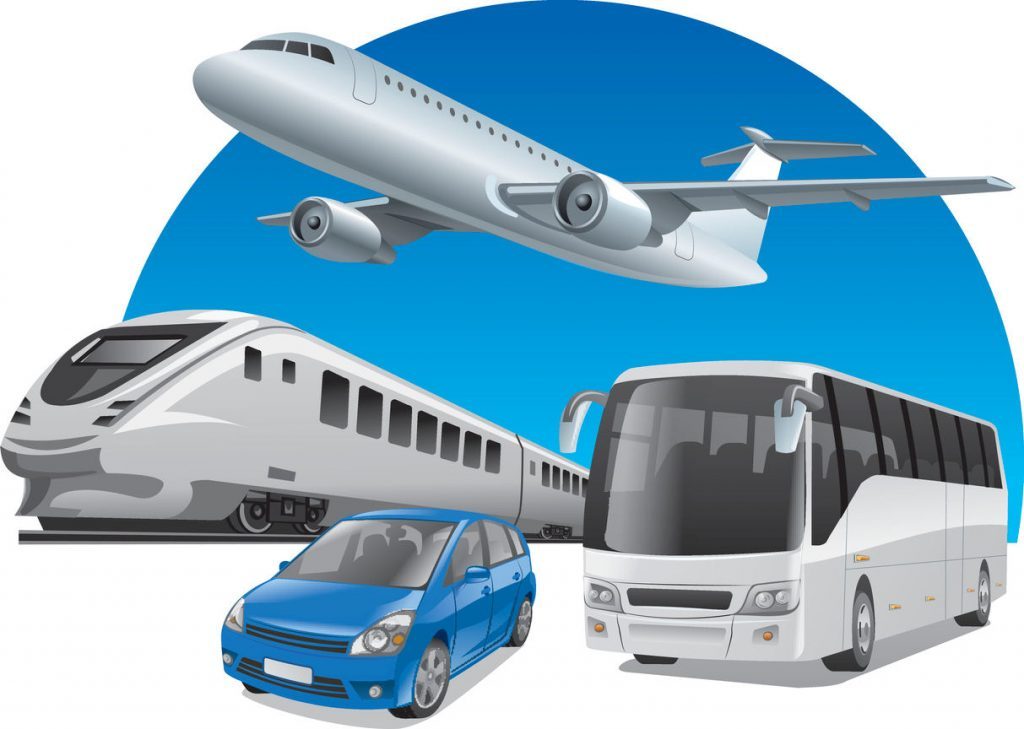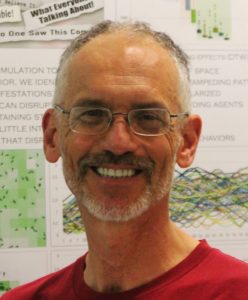 Istock/olegtoka
Istock/olegtoka Transportation Systems in Smart Cities
Modern cities are complex socio-technical entities that exist to provide services effectively to their residents and visitors. In the mobility context, people need to travel quickly and conveniently between locations at different scales, ranging from a trip of a few blocks to a journey across town or further. Each trip has its set of requirements. In some cases time may be of the essence, but in other cases the cost may be paramount — or the convenience of door-to-door travel may be important. In each of these situations, the transportation infrastructure should seamlessly provide the best option to citizens integrating different transportation options including buses, trains, taxis, bicycles, and cars. The combinatorial complexity of all these possibilities negates the option of a single, monolithic control system. How would a grouping, or ensemble of hierarchies perform in this situation? How can this diversity, introduced by the emergence of increasingly shared modes of transport, live together with the goal to make Smart Cities more sustainable?
Meeting traveler’s expectations, and properly exploiting available transport resources, is becoming a more and more complex task.
This document presents a different view than that given by Wiseman in his article “Driverless Cars will Make Passenger Rails Obsolete,” (this issue, p. 22). Here we offer another perspective on the right motivations and at the same time appropriate limits and obstacles, to integrate autonomous vehicles into current transport systems.
Mobility Today
Organizing and managing mobility services within a city, meeting traveler’s expectations, and properly exploiting available transport resources, is becoming a more and more complex task. The inadequacy of traditional transportation models is proven by the prolification of alternative, social, and grassroots initiatives aiming at a more flexible, customized, and collective way of organizing transport (e.g., carpooling, ride and park sharing services, flexi-buses) [1]–[2][3][4]. Some of these attempts have been very successful (e.g., Uber), even if in most cases these are seen as isolated solutions targeting specific mobility target groups, and are not part of the city mobility eco-system, which are mainly based on traditional public and private transport facilities.
The increased demands for more flexible and multi-modal mobility solutions have also introduced significant problems related to climate change, air pollution, etc. For this reason, there is an extreme need to rethink mobility. In recent years, there have been rapid improvements in technologies such as GPS, Radar, Lidar and others that have allowed the creation and improvement of Autonomous Vehicles (AV). AVs are vehicles capable, to some extent, of moving without the control of humans by sensing their environment. AVs automate some aspects of the vehicle related to safety, such as steering or braking, without human input.
In 2018 the U.S. Department of Transportation released a policy on automated vehicles and their safe integration in the transportation system [5] that categorized levels of autonomy in AVs. There are many advantages that could be brought by AV. AVs can help reduce carbon production. They can allow users to better exploit time spent inside the car, since they will be able to employ their time on other activities instead of only driving. Moreover, it is possible to reduce traffic, congestion, and accidents, which are mainly caused by driver errors, fatigue, alcohol, or drugs [6]–[7][8][9].
An attempt rethinking of the way mobility is managed and offered is represented by the Mobility as a Service (MaaS) model. MaaS solutions (e.g., MaaS Global: http://maas.global) aim at arranging the most suitable transport solution for their customers, thanks to a cost-effective integrated offer of different multi-modal means of transportation. MaaS also foresees radical changes in the business landscape, with a new generation of mobility operators emerging as key actors to manage the increased flexibility and dynamism offered by this new concept of mobility.
Selfish vs Collective Mobility
Wiseman’s article makes a number of hypotheses concerning the future of transport systems. In particular, he proposes AV as the only means of transport for the future, making all the others (i.e., railways systems) useless. We can label this way of managing mobility as “selfish” (i.e., each transportation type acts independently, competing against the others). Alternatively, the meaning of “collective mobility” offers a diverse and inclusive model, where instead of thinking of the mobility ecosystem as a set of isolated initiatives, we propose something more effective and sustainable. With collective mobility, the diversity of mobility services is not seen as a way to create competition, but as an added value to make cities smarter and citizens happier.
The impacts of self-driving cars portend significant changes to the transportation ecosystem. Some forecast the end of parking spaces [2]. Others believe that autonomous vehicles will paradoxically increase traffic. Yet others predict that there will be new classes of traffic problems that occur at scale, due to the homogeneity of these transportation systems.
Before changing communities to support what it is believed future transportation will look like and how it will behave, it is necessary to develop mechanisms that allow planners of these localities to model, analyze, and present future possible configurations. This must be done in ways that allow citizens of the communities to understand and participate in the modeling and analysis.
Coordination for mobility as a service can be implemented on a spectrum. At one end are independent agents like car owners, communicating exclusively through market exchanges like Uber or Lyft. In the middle of this range are ensembles of hierarchies, where a set of independently coordinated systems interact, like the way that airplanes, airlines, and air traffic control coordinate using a mix of market and governmental mechanisms. At the far end of this spectrum are single hierarchies, like military systems. These can be highly responsive and efficient, but difficult to make adaptable.
Every means of transportation does not need to individually compete across multiple markets. But neither should there be only one rigid hierarchy. The appropriate compromise is to have diversity and distributed “ecology” of the appropriate means (or a combination of means) of transportation. Whether a system survives in a particular ecosystem should be the result of how it responds to the conditions, be they the needs of a diverse user population, responses to regulation, or market pressures.
To realize such dynamic and emergent behaviors in transportation systems, better development of supporting software systems is needed. In recent years, collective adaptive systems (CAS) have been introduced and studied by many researchers in different application domains (i.e., industry 4.0, logistics, smart cities and mobility, energy, biology, etc. See http://www.focas.eu/focas-manifesto.pdf).
The impacts of self-driving cars portend significant changes to the transportation ecosystem.
CAS consists of diverse heterogeneous entities composing a socio-technical system. Individual entities “opportunistically” enter a system and self-adapt in order to leverage other entities’ resources and capabilities to perform their tasks more efficiently or effectively. At the same time, collections of entities, called “ensembles,” must be able to self-adapt simultaneously to preserve the collaboration and benefits of the system (or sub-system) they a part of.
In this very dynamic and rapidly evolving environment, CAS have the potential of offering the right concepts for modeling and for programming smart mobility solutions, and of speeding up their adoption.
Research Challenges and Obstacles
This article began as a response to the question posed by Weissman: “Will driverless cars make rails obsolete?” In the near term, we believe that the diversity provided by multiple systems, relying on emergent coordination hierarchies, is inherently more resilient than a single transportation solution. We further argue that simulation, contextualized to the expected environment, is likely the best way to answer these kinds of questions. As such we divide research challenges into two groups: 1) the modeling of near-term environments as they begin to incorporate AVs, and 2) the larger problem of rethinking transportation systems that are dominated by intelligent machines.
Whether a system survives in a particular ecosystem should be the result of how it responds to conditions.
In the first case, we have a series of familiar actors: passengers, bus drivers, bus companies, autonomous vehicles, city managers and experts, etc. These are quite autonomous and generally act independently. This makes the system highly dynamic and distributed, and capable of reacting to a transportation environment that changes frequently and unpredictably.
Existing approaches normally deal with multi-agent adaptive systems through isolated adaptation: each actor adapts itself independently from other actors. However, in a Smart City the problem is complicated by collective behavior. Even though agents are generally autonomous, they dynamically form collaborative groups (ensembles), to gain benefits that otherwise would not be possible.
An example of such an ensemble is a carpooling ride, which coordinates the adaptation behavior of multiple entities (car driver, passengers, and carpooling company) and in return gives them certain benefits (e.g., a cheap and fast way of traveling). The membership of an ensemble may temporarily reduce the flexibility of its agents. Within this context, isolated entity self-adaptation is not effective. We can easily imagine what happens if passengers book a trip with a ride and then change their mind and decide not to travel. It is likely to cause unnecessary delay for the other ride participants (e.g., the car driver will have a redundant stop) and raise the cost of the trip for the remaining passengers, including probably extra charges for the canceling passenger. Alternatively, serious consequences can arise if a car gets damaged: isolated adaptation by the car driver could totally disrupt the passengers’ travel plans.
Such a minor issue as a missing passenger is unlikely to cause more than a minor fluctuation in the overall behavior of almost any system. But what happens at the limits? How does a smart system evacuate the population of a mountain village under the threat of avalanche in the middle of a storm? The issue of adaptation must be studied and simulated under many scenarios. In particular, we believe that how a system behaves in extreme situations, when many lives are at stake, is a significant discriminator in deciding on the transportation options for a region.
The second issue is more nebulous, but no less important, as we are laying the foundations for it now. What does the fully intelligent future of transportation look like? And how do we adjust our policies so that what is implemented provides for the needs of the regional population?
Mobility exists in a social context — our movement patterns affect one another, manifested in public works such as roads, railways, and airports. As such, it is a domain that falls under the competence of public administrations. In order to promote durable innovations in this sector, a strong political engagement is mandatory. Balancing the need for innovation to address problems as diverse as congestion and climate change requires mechanisms for informing the public in meaningful ways about potential outcomes (such as new business opportunities) that they have a say in.
As transportation continues to merge with telecommunication, questions of what the transportation infrastructure of the future will be are very much in flux. No one could have predicted that the Internet would have led to such a rapid increase in freight transport, for which services across all transport modes are being used to meet demand. Similarly, intelligent transportation will continue to support the social needs of the public, while also being flexible and resilient enough to handle inevitable catastrophes (i.e., to evacuate crowds in the situation of a natural disaster), that require rapid, mass movements of people. Whether that transportation is rails, roads, or passenger-carrying unmanned aircraft is an open question. We need to start addressing these questions now, before we wind up with solutions that nobody wanted.
Understanding the Full Range of Contextual Factors
Wiseman in his paper presents a vision that can be summarized with the following two sentences: “In the age of driverless cars, a means of transportation that takes many people from one central station to another central station has lost the justification for its existence,” and “Driverless cars will gradually take control of the transportation market, and as more and more driverless cars are on the roads, trains will slowly but surely fade away from our lives.”
In our opinion, these statements are extrapolated from a few factors and do not represent the direction that the mobility domain has been taking in recent years. His position is taken without fully understanding the full range of contextual factors, and social and environmental variables.
Coordination for Mobility as a Service is a mandatory requirement today to maintain a certain level of city sustainability (i.e., lower CO2 emissions, more citizen participation and satisfaction, etc.). MaaS can be implemented on a spectrum, ranging from independent human or robotic agents interacting with users through market exchanges, to hybrid ensembles of hierarchies that lend themselves to mass transit, to fixed, military-style hierarchical control systems. Our opinion is that instead of implementing selfish mobility, there is a need to realize a collective and cooperative mobility where each MaaS provider sees in each single competitors a partner and not an adversary.
Author Information
 Antonio Bucchiarone is with Fondazione Bruno Kessler, Via Sommarive, 18 38123 Trento – Italy. Email: bucchiarone@fbk.eu.
Antonio Bucchiarone is with Fondazione Bruno Kessler, Via Sommarive, 18 38123 Trento – Italy. Email: bucchiarone@fbk.eu.
 Philip Feldmann is with the University of Maryland, Baltimore Coun-ty, MD. Email: feld1@umbc.edu.
Philip Feldmann is with the University of Maryland, Baltimore Coun-ty, MD. Email: feld1@umbc.edu.






 JOIN SSIT
JOIN SSIT